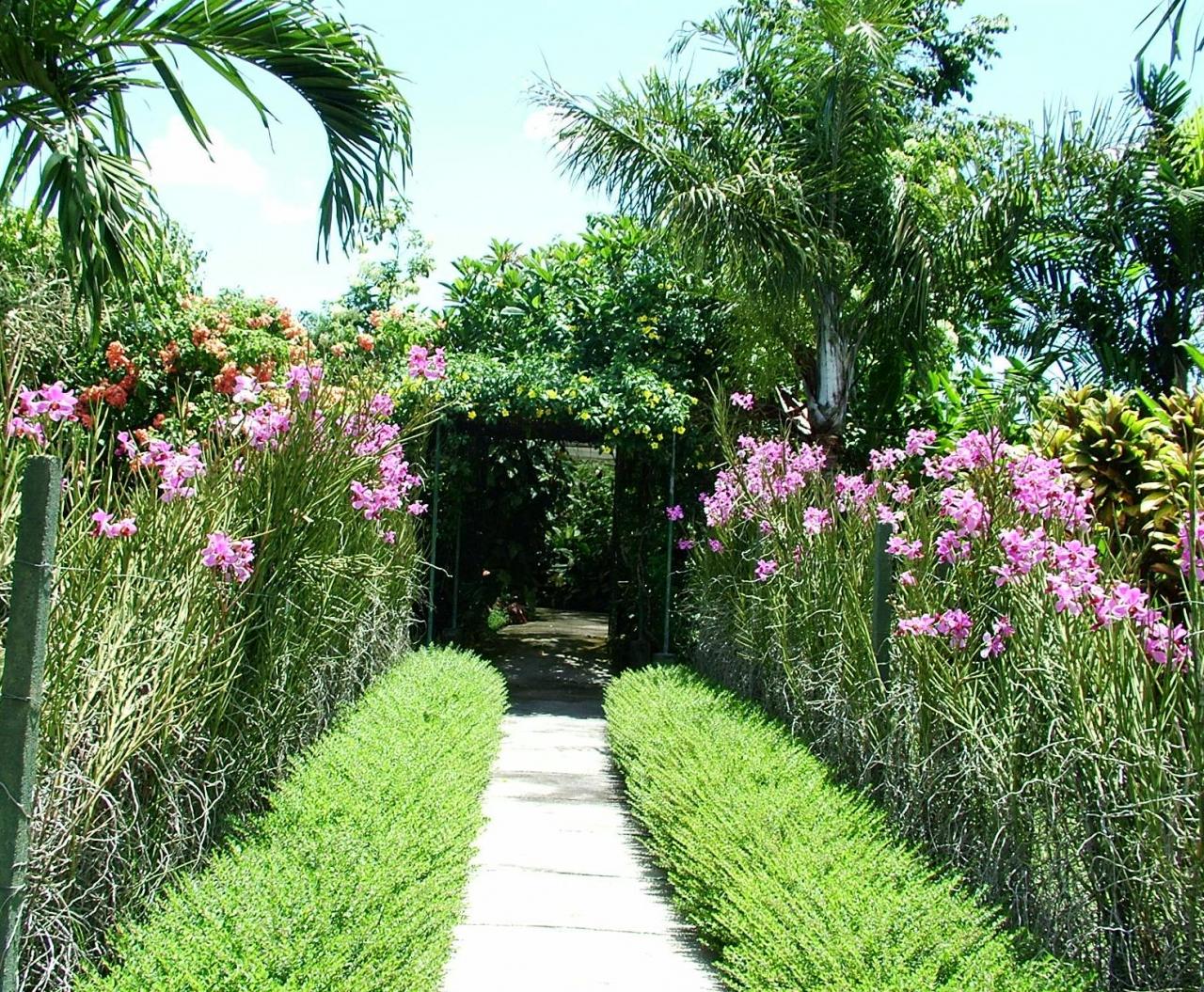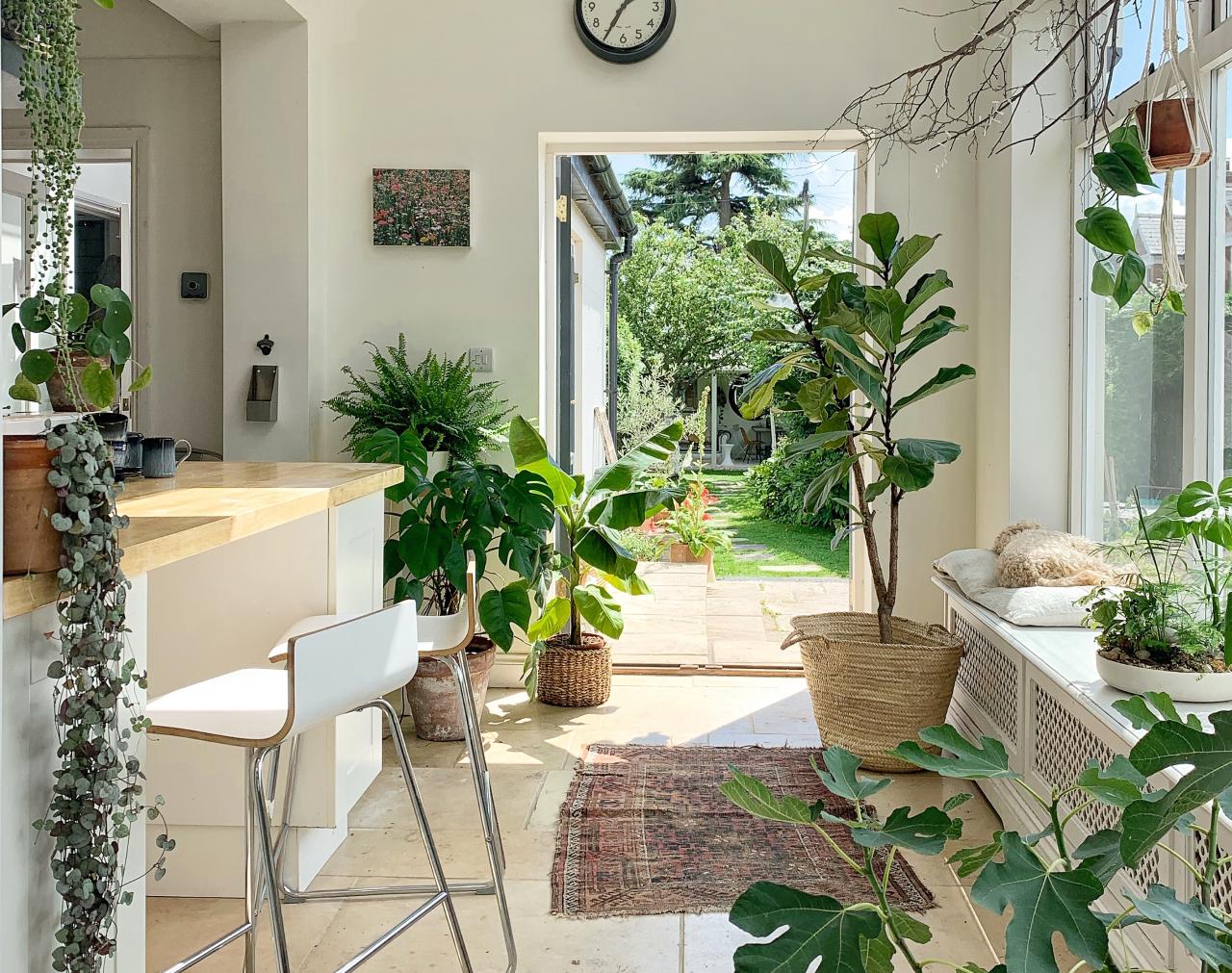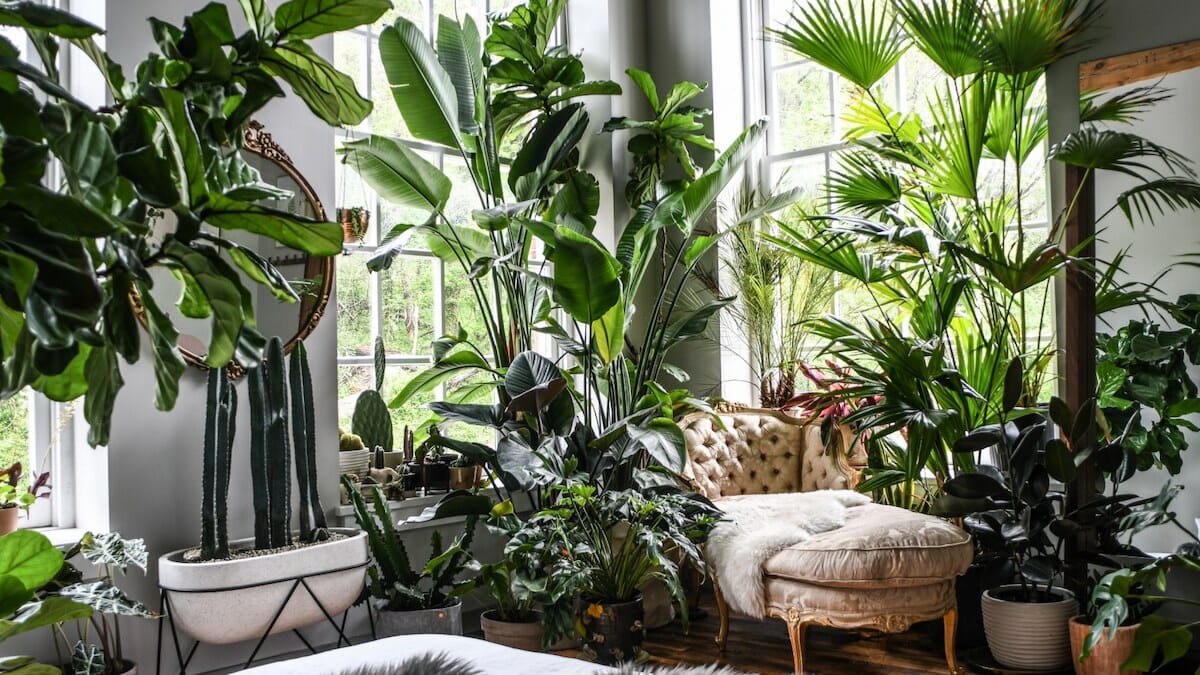Plants for home garden? It sounds daunting, right? But transforming a small balcony or sprawling backyard into a thriving oasis is easier than you think! This guide will walk you through choosing the perfect plants for your space, designing a stunning layout, and mastering the art of planting, maintenance, and harvesting. From understanding sunlight needs to battling pesky pests, we’ve got you covered.
Get ready to cultivate your green thumb and enjoy the bounty of your very own homegrown haven.
Whether you’re a seasoned gardener or a complete newbie, this comprehensive guide offers practical tips and tricks to help you succeed. We’ll cover everything from selecting the right plants for your climate to harvesting and preserving your homegrown produce. Prepare to be inspired and empowered to create a beautiful and productive garden, no matter the size of your space.
Choosing the Right Plants
Starting your home garden can feel overwhelming, but choosing the right plants is the key to success! Selecting species suited to your space, climate, and skill level will make gardening a joy, not a chore. This section will guide you through selecting plants that thrive, even if you’re a complete beginner.
Easy-to-Grow Plants for Beginners
Choosing your first plants can be daunting. Here’s a list of ten easy-to-grow options, perfect for novice gardeners. Remember, even the easiest plants need some attention, so consistent care is crucial.
| Plant Name | Sunlight | Watering | Special Notes |
|---|---|---|---|
| Basil | 6-8 hours of direct sunlight | Keep soil consistently moist, but not soggy | Harvest regularly to encourage bushier growth. |
| Mint | Partial shade to full sun | Keep soil moist, but well-drained | Mint spreads aggressively; plant in a container to control its growth. |
| Sunflowers | Full sun (at least 6 hours) | Water deeply and regularly, especially during dry spells. | These tall beauties need sturdy support in windy areas. |
| Marigolds | Full sun | Water regularly, allowing the soil to dry slightly between waterings. | Known for deterring some pests. |
| Zucchini | Full sun | Water deeply and consistently, especially during fruiting. | Produces a large amount of fruit. |
| Lettuce | Partial shade to full sun (depending on variety) | Keep soil consistently moist | Harvest outer leaves as needed to encourage continued growth. |
| Tomatoes (cherry or small varieties) | Full sun | Water deeply and regularly, avoiding overhead watering. | Stake or cage to support the plants. |
| Snapdragons | Full sun to partial shade | Water regularly, allowing the soil to dry slightly between waterings. | Deadhead spent flowers to encourage more blooms. |
| Nasturtiums | Full sun to partial shade | Water regularly, but allow the soil to dry slightly between waterings. | Both flowers and leaves are edible. |
| Spider Plant | Bright, indirect light | Allow the soil to dry slightly between waterings. | Very easy to propagate from “spiderettes.” |
Herb versus Flowering Plant Growth Habits
Herbs and flowering plants differ significantly in their growth habits. Herbs, such as basil and mint, often have a more spreading or bushy growth habit and require consistent pruning to maintain their shape and encourage leaf production. They generally need less space than flowering plants but require frequent harvesting to prevent bolting (going to seed). Flowering plants, like sunflowers and snapdragons, typically grow taller and may require staking or support.
Their space requirements vary greatly depending on the specific plant, but they often need more space than herbs. Maintenance for flowering plants involves deadheading (removing spent flowers) to promote continuous blooming.
Climate and Microclimate Considerations
Selecting plants that thrive in your specific climate and microclimate is essential. Your home garden’s microclimate can differ significantly from the overall regional climate. Factors like sunlight exposure, wind patterns, and soil drainage within your garden can drastically affect plant growth. For example, a south-facing garden will receive more intense sunlight than a north-facing one. A sheltered area will be less windy, and thus more suitable for delicate plants.
Understanding these nuances will ensure your plants receive the optimal conditions for healthy growth. Before selecting plants, carefully assess your garden’s conditions to choose species that are well-suited to your unique environment.
Planning Your Home Garden Layout

Designing your home garden layout is crucial for maximizing space and ensuring your plants thrive. A well-planned layout considers factors like sunlight, water access, and plant compatibility, leading to a beautiful and productive garden. Careful consideration of these elements will transform your gardening experience from a challenge into a rewarding hobby.
Small Balcony Garden Layout
A small balcony can still support a vibrant garden with careful planning. Imagine a 3ft x 6ft balcony facing east. The eastern exposure provides ample morning sun, ideal for many plants. We can create a layered effect using varying plant heights and textures. At the back, against the building wall, place a taller, self-supporting plant like a tomato plant ( indeterminate variety for continuous harvest) in a large pot.
This acts as a backdrop. In the middle, incorporate medium-height herbs such as rosemary and basil in slightly smaller pots. These fragrant plants add visual interest and culinary benefits. Finally, at the front, closer to the balcony edge, position low-growing succulents and trailing plants like ivy or a creeping jenny in smaller containers. This creates a visually appealing cascade.
The varied heights and textures add depth and visual appeal to the small space. Regular watering and occasional fertilization will ensure healthy growth.
Companion Planting Benefits and Examples
Companion planting involves strategically placing plants together to improve their growth and deter pests. This technique leverages the synergistic relationship between different plant species. For example, basil planted near tomatoes repels tomato hornworms, while marigolds planted throughout the garden deter nematodes and other soil-borne pests. Similarly, carrots and onions are excellent companions, with the onions deterring carrot root flies, while the carrots help improve the onion’s flavor.
This mutually beneficial arrangement boosts overall garden health and productivity.
Larger Home Garden Layout Planning
Planning a larger home garden requires a more systematic approach. Begin by assessing your space. Note the sunlight exposure throughout the day—full sun, partial shade, or full shade. This will determine which plants are suitable for each area. Next, identify your water source and accessibility.
Consider proximity to a hose or irrigation system. Finally, test your soil to determine its type and pH level. This information is crucial for selecting plants that thrive in your specific soil conditions. After this initial assessment, create a rough sketch of your garden, dividing it into sections based on sunlight and water access. Then, select plants appropriate for each area.
Choosing the right plants for your home garden can totally transform your space. To really maximize your garden’s potential, you’ll want to consider the overall design and layout; check out these amazing home garden ideas for inspiration. From there, you can select plants that complement your chosen style and thrive in your specific conditions, creating a beautiful and flourishing garden.
Consider grouping plants with similar water and sunlight needs together for efficient watering and care. Remember to leave enough space between plants for growth and easy access. Regular monitoring and adjustments based on plant growth will ensure a successful garden.
Planting and Maintaining Your Garden: Plants For Home Garden

Creating a thriving home garden requires more than just choosing the right plants and planning the layout. The success of your garden hinges on proper planting and consistent maintenance. This involves understanding the needs of your chosen plants and providing them with the optimal conditions for growth. From preparing the soil to watering effectively, attention to detail is key.
Planting Seedlings and Seeds
Successful planting begins with soil preparation. Loose, well-draining soil is crucial for healthy root development. Amend heavy clay soils with organic matter like compost to improve drainage and aeration. Sandy soils benefit from the addition of peat moss or other organic materials to increase water retention. Once the soil is prepared, dig holes or create furrows according to the plant’s specific requirements.
Seedlings should be planted at the same depth they were growing in their containers, ensuring the root ball is completely covered with soil. Seeds should be planted at the depth recommended on the seed packet, usually 2-3 times their diameter. Proper spacing is also important; overcrowded plants compete for resources, leading to stunted growth. Follow the recommended spacing guidelines on the seed packet or plant tag.
Efficient Watering Techniques
Watering is crucial, but overwatering or underwatering can both harm your plants. Overwatering leads to root rot, while underwatering causes wilting and stress. The best approach is to water deeply and less frequently, encouraging deep root growth. Water at the base of the plant to avoid wetting the foliage, which can promote fungal diseases. Use a soaker hose or drip irrigation system for efficient watering, minimizing water waste and ensuring even moisture distribution.
The frequency of watering depends on factors like weather conditions, soil type, and plant type. Check the soil moisture regularly by inserting your finger a few inches into the soil; if it feels dry, it’s time to water.
Choosing the right plants for your home garden can dramatically impact its aesthetic appeal and overall vibe. But don’t forget the importance of protection! Consider installing a stylish and functional structure like those showcased in this article on innovative rooftop pergola designs for shade and weather protection to shield your precious plants from harsh weather. This ensures your garden thrives, regardless of the elements, allowing your carefully selected plants to flourish.
Essential Gardening Tools and Their Uses
Having the right tools makes gardening easier and more efficient. A well-equipped gardener will find these tools indispensable.
- Trowel: A small hand tool used for digging small holes, transplanting seedlings, and weeding.
- Hand Rake: Used for smoothing soil, removing debris, and preparing seedbeds.
- Gardening Gloves: Protect your hands from thorns, dirt, and insects.
- Watering Can or Hose: For providing water to your plants.
- Pruning Shears: Used for trimming and shaping plants.
- Shovel: A larger tool for digging larger holes, turning over soil, and moving soil.
- Hoe: Used for weeding and cultivating soil.
Dealing with Pests and Diseases

A thriving home garden can quickly become a battleground against unwanted pests and diseases. Understanding common threats and employing effective preventative and control measures is crucial for maintaining healthy plants and a bountiful harvest. Ignoring these issues can lead to significant plant damage, reduced yields, and even the complete loss of your garden. This section will equip you with the knowledge to identify, prevent, and control common garden problems.
Common Garden Pests and Diseases and Their Symptoms
Numerous pests and diseases can affect home gardens, each with distinct symptoms. Early identification is key to effective treatment. For instance, aphids, tiny sap-sucking insects, often cluster on leaves and stems, causing leaf curling and yellowing. Powdery mildew, a fungal disease, manifests as a white, powdery coating on leaves, hindering photosynthesis. Similarly, tomato blight, another fungal disease, presents as brown, water-soaked spots on leaves and fruits, eventually leading to plant collapse.
Recognizing these visual cues allows for timely intervention.
Pest and Disease Prevention Strategies
Proactive measures are often more effective than reactive treatments. Rotating crops annually helps disrupt pest and disease cycles, preventing the buildup of pathogens in the soil. Choosing disease-resistant plant varieties significantly reduces the risk of infection. Maintaining good garden hygiene, including removing weeds and diseased plant debris, eliminates breeding grounds for pests and pathogens. Proper watering techniques, avoiding overhead watering which promotes fungal growth, also contribute to a healthier garden environment.
Furthermore, companion planting, where certain plants repel pests or attract beneficial insects, can naturally enhance pest control. For example, planting marigolds alongside tomatoes can deter nematodes.
Organic Pest and Disease Control Methods
Organic methods prioritize environmentally friendly solutions. Neem oil, derived from the neem tree, acts as a natural insecticide and fungicide, effectively controlling various pests and diseases. Insecticidal soap, another organic option, disrupts the cell membranes of soft-bodied insects like aphids and mealybugs. Beneficial insects, such as ladybugs and lacewings, can be introduced to the garden to prey on common pests.
Bacillus thuringiensis (Bt), a naturally occurring bacterium, is effective against specific caterpillars. Composting and mulching enrich the soil, promoting plant health and resilience against diseases.
Chemical Pest and Disease Control Methods
When organic methods prove insufficient, chemical pesticides and fungicides may be necessary. However, these should be used judiciously and as a last resort, always following label instructions carefully. Select products specifically targeting the identified pest or disease to minimize harm to beneficial insects and the environment. Apply chemicals only when necessary and avoid spraying during windy conditions or when pollinators are active.
Proper disposal of empty containers is crucial to protect human health and the environment. Remember that overuse of chemicals can lead to resistance in pests and harm beneficial organisms.
Diagnosing Plant Problems and Determining Treatment
Diagnosing plant problems requires careful observation. Note the affected plant parts, the nature of the damage (e.g., holes in leaves, discoloration, wilting), and the overall health of the plant. Consult reliable resources, such as gardening books, websites, or local agricultural extension offices, to identify potential causes. Start with less-invasive methods like adjusting watering or fertilization before resorting to chemical treatments.
Keep detailed records of your observations and treatments to track progress and refine your approach in future seasons. Remember that early detection and intervention are crucial for successful management of plant pests and diseases.
Harvesting and Enjoying Your Homegrown Produce

The culmination of your gardening efforts is finally here: harvest time! Knowing when and how to harvest your fruits, vegetables, and herbs is crucial for maximizing flavor and ensuring a bountiful yield. Proper harvesting techniques not only improve the taste of your produce but also contribute to the overall health and productivity of your plants. This section will guide you through the process, from identifying peak ripeness to preserving your harvest for enjoyment throughout the year.
Harvesting at the optimal time is key to unlocking the full potential of your homegrown goodies. Overripe produce can be mushy and lack flavor, while underripe produce might be tough and tasteless. The timing depends on the specific plant and its variety, but generally, you’ll want to harvest when the produce is firm, vibrantly colored, and fragrant (if applicable).
For example, tomatoes should be picked when they’ve reached their full color and are slightly soft to the touch, while peppers should be harvested when they’ve reached their mature size and color, depending on the variety (green bell peppers may be harvested earlier than red ones).
Harvesting Techniques for Peak Ripeness
Knowing when to harvest is only half the battle; the method of harvesting is equally important. Gentle handling prevents bruising and damage, extending the shelf life of your produce. For example, carefully twist off herbs at their base, ensuring you don’t pull up the entire plant. Similarly, use sharp, clean shears or knives to cut larger vegetables like tomatoes and peppers, leaving a small stem attached to minimize the risk of rot.
Avoid pulling or tugging on the plants, as this can damage the roots and hinder future growth.
Using Homegrown Produce in Cooking and Preserving
The possibilities are endless when it comes to using your homegrown bounty. Fresh herbs add vibrant flavors to soups, salads, and stir-fries. Ripe tomatoes can be transformed into delicious sauces, salsas, or simply enjoyed in sandwiches. Seasonal vegetables provide a foundation for nutritious and flavorful meals. However, to enjoy your harvest long after the growing season ends, preserving techniques are essential.
Preserving Herbs and Vegetables, Plants for home garden
Several methods extend the life of your homegrown produce. Drying is a simple method for herbs. Bundle small bunches of herbs and hang them upside down in a cool, dry, and dark place for a couple of weeks, or until they are brittle. Freezing is excellent for vegetables. Blanch vegetables briefly in boiling water, then quickly plunge them into ice water to stop the cooking process.
This helps retain their color, texture, and nutrients. Pack them into freezer bags, removing as much air as possible. Pickling is another option for extending the life of vegetables like cucumbers, onions, and peppers. Pickling involves submerging vegetables in a brine solution (vinegar, water, salt, and spices) to create a tangy and flavorful preserve. Each method has its own advantages and requires slightly different procedures, so research the specifics for your chosen produce.